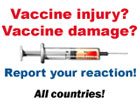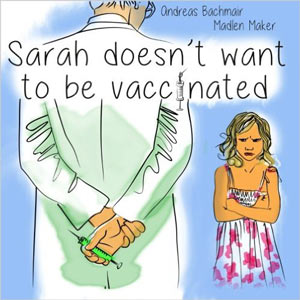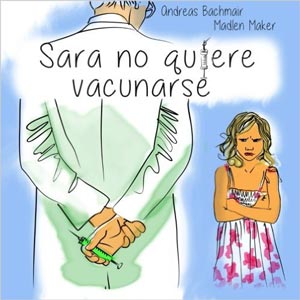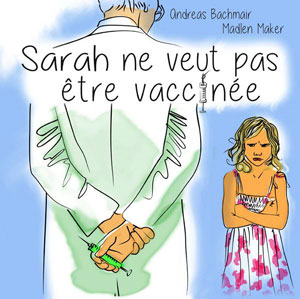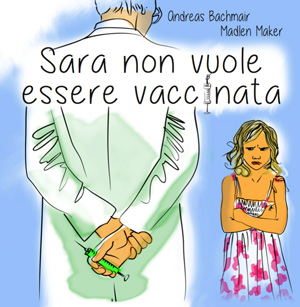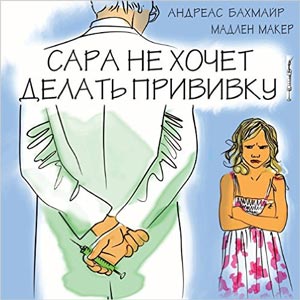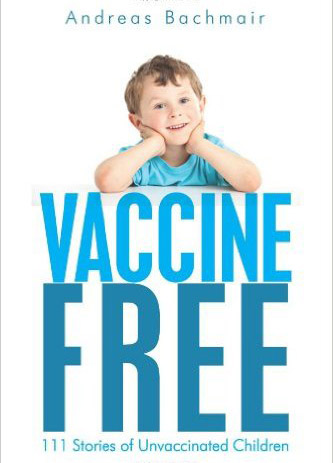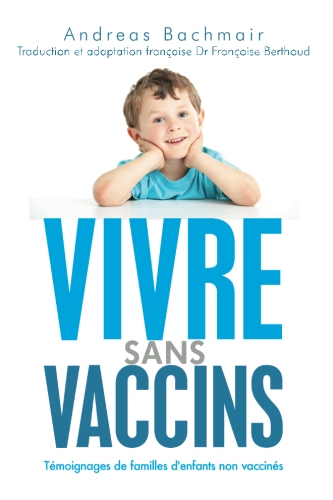Rotaviruses
General information
Rotaviruses have spread worldwide. Most children (>90%) have experienced a rotavirus infection by the time they turn four. In the course of the early years antibodies are increasingly created as a result of contact with rotaviruses. Earlier diseases can protect from becoming ill later if there is a reinfection with the same or different rotavirus types. As adults the diseases mainly occur as traveler’s diarrhea. However, only 20% of traveler’s diarrhoea is due to rotaviruses. The most serious cases of the disease occur in the age groups between 6 months and 2 years. In moderate climates rotavirus infections are primarily observed during the winter months due to the fact that the pathogens have an easier time spreading in the warm and dry climate of heated living quarters. Except for children, severe afflictions caused by rotavirus infections are only recorded for older or immune-suppressed patients. Rotaviruses can frequently be found in hospitals, where smears taken show them on the hands of the majority of hospital employees. (Gleizes O, Desselberber U, Tatochenka V et al.: Nosocomial rotavirus infection in European countries. Pediatr. Infect Dis J 2006, 255:12-19).
In industrial countries the course of the disease is very rarely fatal or associated with grave complications.
Presently rota vaccinations are not officially recommended. This will probably change as soon as the vaccine is available. It can thus be expected that the vaccination will soon be included in immunization regimens, even though there is no medical necessity to do so here.
Thus STIKO-member C. Huelssle was the director of the "REVEAL"-trial which was financed by the manufacturer of RotaTeq, Sanofi Pasteur MSD, which concluded that the vaccination would result in reducing the number of sick days taken by 2-6 days, thus reducing the time parents would have to stay away from work (www.dgk.de/web/dgk_file/Monatzeitschrift_Kinderheilkunde_Wiese-Posselt_2007.pdf). Ms Huelssle is also a member of the Expert Committee for Rotavirus Vaccines at Sanofi Pasteur.
If you would like more information, please see:
Polio Vaccination
Poliomyelitis in Switzerland / Cases per 100000 persons – Deaths per 100000 persons
Source: BAG Federal Office of Health
Two different vaccines are administered today: oral vaccination (Sabin) which is no longer in use in Western industrial nations and inoculation (Salk):
Sabin: This is an oral vaccine with weakened Type I, II and III viruses which are bred on Vero cells. Lacto albumine, antibiotics, amino acids and other compounds are added. It is no longer used in Germany today as the vaccination itself triggered polio in a number of cases (vaccination-associated poliomyelitis).
Salk: Optionally there is another vaccination with inactivated viruses, which is inoculated. It also contains formaldehyde or phenoxyethanol as a conservation compound. This new vaccination cannot cause vaccination polio as it consists of inactivated viruses. This vaccine, however, lacks mucous membrane immunity (Impfen, Routine oder Individualisation, Arbeitsgruppe für differenzierte Impfungen2 Aufl. März 2000, S. 24)
The virus used to be bred on monkeys’ kidneys which meant that it was impossible to prevent that viruses got into the vaccine from the cell cultures. It was the Simian Virus 40 that reached notoriety in this context. According to a report by Shah, Nathanson more than 30 million Americans and more than 100 million worldwide were infected with the Simian Virus (Shah K, Nathanson N.:Human exposure to SV40: review and comment.Am J Epidemiol. 1976 Jan;103(1):1-12). This virus is linked to brain tumors and certain other types of cancer
Immunity
The protection rate for the Salk vaccine is listed as >90%, for the Savin vaccine >95% (Impfreaktionen, Quast, Thilo, Fescharek, HippokratesVerlag 1993, S.111). This protective rate is based on the amount of antibodies that are created by the body after a vaccination. Due to the fact that the antibodies do not represent the sole defense of the organism (cellularly transmitted immunity is what is really important) the figures regarding protection rates can be considered with due skepticism.
What could be problematic about the new Salk vaccine is that a sole vaccination with killed pathogens would only result in insufficient intestinal immunity (the virus enters via the intestines) the poliovirus therefore continues to remain in circulation (Herremans TM, Reimerink JH, Buisman AM, Kimman TG, Koopmans MP.Induction of mucosal immunity by inactivated poliovirus vaccine is dependent on previous mucosal contact with live virus.
J Immunol. 1999 Apr 15;162(8):5011-8.)
The other aspect that is problematic is that the vaccination viruses of the oral vaccine have the ability to mutate into polio viruses in sewages and that they can circulate there (Yoshida H, Horie H, Matsuura K, Miyamura T.:Characterisation of vaccine-derived polioviruses isolated from sewage and river water in Japan. Lancet. 2000 Oct 28;356(9240):1461-3.) The viruses are not only capable of mutating in sewages, they can mutate back to a wild virus in the intestines of people who have just been vaccinated.(Impfen, Routine oder Individualisation, Arbeitsgruppe für differenzierte Impfungen2 Aufl. März 2000, S. 26)
Eckard Wimmer has noted the WHO’s current policy calls for cessation of OPV vaccination three years after the last case of poliovirus-caused poliomyelitis. Injectable polio vaccine (IPV) will replace OPV in countries which can afford it. The risks inherent in this strategy are immense. Herd immunity against poliomyelitis will rapidly decline as new children are born who have not been infected with wild-type viruses or were not vaccinated, a situation that has never existed in human history. Thus, any outbreak of poliomyelitis will be disastrous, whether it is caused by residual samples of virus stored in laboratories, by vaccine-derived polioviruses, or by poliovirus that is chemically synthesised with malignant intent(Neetu Vashisht, Jacob Puliyel: Polio programme: let us declare victory and move on. Indian Journal of Medical Ethics Vol IX No 2 April-June 2012)
Side effects, vaccine complications and vaccine damages of Polio vaccine
Influenza-like symptoms include diarrhoea and paralysis. Polio does not occur frequently after an oral vaccine, but it is possible. What is problematic is the danger of contagion caused by people who have recently been vaccinated. The danger exists approximately 1 week to 2 months after the vaccination. In the 90s there were more cases of vaccination polio than genuine cases of polio in Europe and in the U.S. There were a number of reports on vaccine polio in people who had been infected with the virus by people who had recently been vaccinated den (Martin Hirte: Impfen : Pro und Contra, S. 123)
Arzneitelegramm (11/23/1999) included descriptions of individual cases of Vasculitis, Purpura, Bell’s syndrome, paeresthesia, cri encephalique and articular effusion.
But since the vaccine only appears in combination vaccines it is impossible to distinguish which vaccine is responsible for potential complications.
There can be neurological side effects due to the fact that poliomyelitis afflicts the nervous system. Dr. Ehrengut, an expert, reports of Guillain Barré Syndrome, paralysis and cramps after oral vaccinations and inoculations. (Erfahrungen eines Gutachters über Impfschäden in der BRD von 1955-2004, Wolfgang Ehrengut, S.37-42, 61-72) Long-term trials have not been conducted yet.
From 1956 to 1966 there were a large number of cases of SSPE (sub acute sklerosizing pan encephalitis). This disease leads to a slow destruction of the brain of people who have contracted the disease. The mass vaccinations as of 1956 with the Salk vaccine (inoculation) were blamed for the great outbreak (more than 100 times as big as expected). Quote:" The administration of the Salk vaccine in New Zealand was linked to SSPE. The thought that an unusual reaction to measles (see measles) is the sole case for SSPE cannot be reconciled with our observations in New Zealand. (Baguley DM, et al, 1973, Lancet,.October 6, 763-765)
In India there has been a huge increase in non-polio acute flaccid paralysis (NPAFP). In 2011, there were an extra 47,500 new cases of NPAFP. Clinically indistinguishable from polio paralysis but twice as deadly, the incidence of NPAFP was directly proportional to doses of oral polio received.
Nationally, the non-polio AFP rate is now 12 times higher than expected. In the states of Uttar Pradesh (UP) and Bihar, which have pulse polio rounds nearly every month, the non-polio AFP rate is 25- and 35-fold higher than the international norms.(Neetu Vashisht, Jacob Puliyel: Polio programme: let us declare victory and move on. Indian Journal of Medical Ethics Vol IX No 2 April-June 2012)
Poliomyelitis
General information
Polio is a relatively recent disease. Even though there are paintings that date back to old Egypt which supposedly depict people who have come down with polio, the first descriptions only date back to 1840. In 1838 Jackob von Heine had given an account of acute paralysis of the legs of children at a conference of natural scientists in Freiburg, Germany. Two years later he described the pathology in a monograph, defining it as a disease in itself and referred to it as spinal paralysis in children. Medin was the first to describe an epidemic which goes back to 1887 occurring in Stockholm, Sweden. Since this time there have been seasonal epidemics increasing in intensity in industrial countries. .(Vaccines, Pliotkin&Ohrenstein, Saunders Press, 3rd Edition) Neither Paracelsus nor Hippocrates knew of the disease. This fact is the reason why some authors are of the opinion that the cause of poliomyelitis has to do with the rising production of toxic materials which started at the same time. In 1915 there was the great polio epidemic in New York, when chlorobenzene (main component for the production of DDT) was being produced on a large scale for the first time. In 1942 there was another polio epidemic, again after a massive production of chlorobenzene. The link to DDT was confirmed by trials in the U.S. and Switzerland in 1952 and 1953. It was determined that the cause for paralysis in calves was milk. If this milk was drunk by humans, they came down with polio just like the calves (Kritische Analyse der Impfproblematik, Anita Petek-Dimmer, S.305-309)
Dr. Kumm, the director for polio research in the U.S. in 1953 found a similar connection. Before he became director of polio research he was very involved in researching frambesia (tropical infection disease). There were various publications that reported that in 1936 there had been a polio epidemic in Somalia as a result of treating frambesia with arsenic .(Kritische Analyse der Impfproblematik, Anita Petek-Dimmer, S.305-309)
According to the WHO, Europe, America and the Pacific Region are polio-free. At the beginning of the 20th century contact with the polio wild virus became more and more rare as a result of the rise in living standards and better hygienic conditions. More people were unable to build up a sufficiently strong protection against antibodies. At the middle of the century this led to the great polio epidemics during which children from wealthy families were coming down with the disease.
"The charade about polio eradication and the great savings it will bring has persisted to date. It is a paradox, that while the director general of WHO, Margret Chan, and Bill Gates are trying to muster support for polio eradication (22) it has been known to the scientific community, for over 10 years, that eradication of polio is impossible. This is because in 2002 scientists had synthesised a chemical called poliovirus in a test-tube with the empirical formula C332,652H492,388N98,245O131,196P7,501S2,340. It has been demonstrated that by positioning the atoms in sequence, a particle can emerge with all the properties required for its proliferation and survival in nature (23, 24). Wimmer writes that the test-tube synthesis of poliovirus has wiped out any possibility of eradicating poliovirus in the future. Poliovirus cannot be declared extinct because the sequence of its genome is known and modern biotechnology allows it to be resurrected at any time in vitro." (Neetu Vashisht, Jacob Puliyel: Polio programme: let us declare victory and move on. Indian Journal of Medical Ethics Vol IX No 2 April-June 2012)
If you want to know more:
Polio
Pathogen
The pathogens are enteroviruses. There are three different types: Type I, Type II and Type III. Transmission is via contact with sputum and infected stool. Nowadays it is primarily recently vaccinated people who carry the virus (live vaccinations). There is hardly any incidence of wild viruses today.
The virus proliferates in the digestive tract and lymph system and can get into the blood stream from there.
Clinical picture
After an incubation time of 3-14 days people experience nausea, fever and influenza-like symptoms, followed by a short fever-free interval and then a feverish episode coupled with neck rigidity and paralysis. In 5% of the cases influenza-like symptoms are sometimes coupled with aseptic meningitis. Within only a few days the person is healthy again. Only 0.1-1.0% of people who fall ill with the disease experience a typical case of poliomyelitis with paralysis of the limbs. The paralysis recedes again in a majority of the patients.
In 90-95% of cases of the disease the course is clinically inapparent, i.e. without symptoms or as a mild disease.
Therapy
If the disease (including paralysis) has already erupted, it is unavoidable that the person must be hospitalized. Mainstream medicine is not aware of a causative therapy.
Complications
It is possible that every degree of paralysis will remain. Apnea and cardiac arrest have been observed during the acute stage of the disease.
Immunity
After every stage of the disease there is 100% immunity.
Pneumcoccal vaccination
Vaccination
Until July 2006, pneumococcal vaccinations were an indication vaccination. They were administered to children (as of three months of age), adolescents and adults with an increased health risk as a result of an underlying disease: (RKI: Epidemiologisches Bulletin No. 28):
- For congenital and acquired immune defects (e.g. congenital and acquired immune defects such as HIV infection, A and hypo gamma globulinaemia, sickle cell anemia or other haemoglobulinopathies or asplenia)
- chronic diseases (diabetes mellitus, respiratory infections, renal failure, before organ transplants)
- Premature babies, children who do not weigh much at birth, infants and children with failure to thrive or neurological diseases
Children younger than three years of age receive the pneumococci multiple vaccine. This vaccine contains 7 serotypes of the 90 which are known. What is problematic here, however, is that 4 of the most common ones are missing. The vaccine was developed in the USA where other serotypes are responsible for the diseases.
People who are older than 60 and children who are older than 2 years of age receive a polysaccharide vaccine with 23 serotypes.
Pneumococcal vaccinations have been recommended as a standard vaccination for people older than 60 years of age for years. But for infants and small children the vaccination has always been an indication vaccination. This changed in 2006. Saxony was the first German Federal state to include pneumococcal vaccinations in their list of standard vaccinations. In August of 2006 this recommendation was put into effect for all of Germany. Even though pneumococcal diseases endangers only small children who already have an existing disease (see above), healthy infants and small children are also to be vaccinated even though the benefit of vaccinations has not been proven for this group.
In the interim pneumococcal vaccinations have also been included in the vaccination regimen as a standard vaccination for infants in Austria.
The new general vaccination recommendation for children will place a great financial burden on health care providers due to the fact that the price for the four required pneumococci vaccination doses presently comes to 248 €. Generally health insurers take over the costs for vaccinations that are recommended by STIKO. But due to the fact that the costs for the pneumococcal vaccinations have doubled the costs for vaccinations for children it remains to be seen to what extent health care providers are willing to cover all of the vaccinations which are recommended.
Immunity
Due to the fact that a large part of the vaccination subgroups is missing in the vaccine (for children younger than 3 years of age) the effect of the vaccination is questionable. Furthermore it has been shown that the serotypes which are not contained in the vaccine are vastly increasing as the causative pathogen (ESKOLA, J. N. English Journal of Medicine. 2001; 344: 403-9).
While the Finish trial investigating middle ear infections cut the risk of otitis caused by pneumococci by a third, the total number of middle ear infections remained the same:
|
A randomized controlled double-blind trial included 1662 children whose parents had agreed to the recommended vaccinations. What was investigated was the occurrence of acute otitis (confirmed by cultures) and side-effects within 2 years after the vaccinations. Results: Within 2 years there were a total of 2596 cases of culturally confirmed otitis media.The rate of all of the acute otitis cases in the intervention group was decreased by 6% as compared to the control group. The number of otitis cases caused by pneumococci dropped by 34%, the middle ear infections that were caused by the serotypes contained in the vaccine even by 57%. However, in the intervention group the increase of otitis amounted to 33% caused by the serotypes in the vaccination not taken into account. There were more local side effects in the intervention group than in the control group. The difference in serious side-effects was not significant. If you look at the number of hospitalizations due to system infections of children after pneumococci vaccinations there were 4 in the intervention group as compared to 13 in the control group (statistically significant).
Comment The reduction in all cases of otitis media by 6% is a value which is not statistically significant for the data on hand. On the other hand there is significance in the reduction of hospitalizations due to systemic infections. In absolute numbers: the number of cases prevented for 1662 children amounts to 9. |
In the USA the number of hospitalizations due to pneumococcal diseases dropped by 50% between 2000 to 2002, in other words after the introduction of pneumococal vaccinations, but serious diseases such as meningitis or sepsis as a result of pneumococci not protected by the vaccine rose by 50% ("serotype replacement") and a larger number can now also be found in nose and throat cultures of children who have been vaccinated.
Moreover, ear infections due to other bacteria than pneumococci are becoming more prevalent (some with a larger antibiotic spectrum of resistance).(http://www.boston.com/news/globe/health_science/articles/2005/06/21/childhood_vaccine_saves_lives_but_may_lead_to_other_infections/ Bogaert D, Veenhoven RH, Sluijter M, Wannet WJ, Rijkers GT, Mitchell TJ, Clarke SC, Goessens WH, Schilder AG, Sanders EA, de Groot R, Hermans Molecular epidemiology of pneumococcal colonization in response to pneumococcal conjugate vaccination in children with recurrent acute Otitis media.PW.J Clin Microbiol. 2005 Jan;43(1):74-83.)
As a result of pneumococci vaccinations (including Hib vaccination) there is not only a shift of the serotypes of the pneumococci in the nasopharynx, the mouth flora changes which makes it easier for pathogenic bacteria to settle. Thus the pneumococcal vaccination results in a rise of pathogenic staphylococcus aureus bacteria. (Regev-Yochay G, Dagan R, Raz M, Carmeli Y, Shainberg B, Derazne E, Rahav G, Rubinstein E.Association between carriage of Streptococcus pneumoniae and Staphylococcus aureus in Children.JAMA 2004 Aug 11;292(6):716-20./Elena S. Lysenko, Adam J. Ratner, Aaron L. Nelson, Jeffrey N. Weiser,The Role of Innate Immune Responses in the Outcome of Interspecies Competition for Colonization of Mucosal SurfacesPLoS Pathogens September 2005; Vol. 1 (1): e1 0009)
The university clinic in Barcelona investigated the changes in the invasive pneumococcal diseases after introduction of the pneumococcal vaccination Prevanar between the years 1997-2001 and 2002-2006. After introduction of the pneumococcal vaccination the rate of invasive pneumococcal diseases has increased significantly – mainly caused by (1, 6A, 5, 19A) which are not contained in the vaccine.(referred to as serotype-replacement- see above). The rise was 58% in children younger than 2 years of age and 135% in children between 2-4 years of age. When the children were younger than 5 years of age the clinical pneumonias and/or empyema caused by pneumococci were more frequent by 320%. (Carmen Munoz-Almagro, Iolanda Jordan, Amadeo Gene, Cristina Latorre, Juan J. Garcia-Garcia,and Roman Pallares: Emergence of Invasive Pneumococcal Disease Caused by Nonvaccine Serotypes in the Era of 7-Valent Conjugate Vaccine,CID 2008:46 (15 January)
Side effects, vaccination complications and vaccination damages of pneumococci vaccinations
The most frequent side effects that were observed included reactions at the site of injection, fever (> 38°C), fussiness, fatigue, restless sleep, lack of appetite, vomiting, diarrhoea and rash or urticaria. Children who received combined vaccinations against diphtheria, pertussis and tetanus at the same time tended to suffer from fever more often.
|
Specific information on Pneumovax |
Specific information on Prevenar |
|
The most frequent side effects in clinical trials Purpura |
Disorders of the blood system and lymph system: Disorders of the immune system: |
Conclusion:
A wide range of pneumococcal vaccinations will not guarantee that the total number of pneumococci diseases decreases. There is a danger of a shift towards other bacteria which are not part of the vaccine. The benefit of the vaccination in Central Europe is not guaranteed – neither for healthy children nor fort he elderly.
Moreover, as a result of the four recommended vaccinations infants are burdened by aluminum, a problematic material in itself.
Please support vaccination-critical information
If you are interested in the work of www.vaccineinjury.info and would like to receive neutral information pertaining to vaccinations in the future, you can support us by donating some money.



